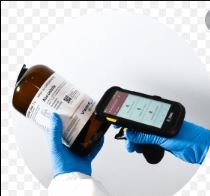53 Days: The Metrics of Physical Inventory Options
SARA 312 Tier 2: 53 Days until deadline & counting down
10x manual 4x spreadsheet 1x handheld scanners
“The times things go right are the exception ” Ian Fore, Mentor
I had the (good) fortune to be involved in physical inventory across all 3 methods: manual (paper); spreadsheet and handheld scanners, and you see the comparative efforts of each.
And given my "‘druthers”, I’d actually take a different approach than any of the 3: have your suppliers start sending in their materials with unique container identifers on them (we used barcodes at the time, you may have better technology available to you).
Have them also send/make available to you and electronic file of what the contents of each container are. One client did that monthly and was able to use the information for their monthly Title V Air Permit reports.
Technology can speed up the process of conducting your physical inventory
A variety of options exist today for getting your physical inventory conducted.
Try to choose one that makes any containers from this year reusable next year.
Affixing a unique barcode or other scannable label onto each container is one way.
Is anybody using RFID tags or other self scanning tags? How did you justify the budget to management? How has the investment paid off?
Do that for a full year (or as close to it as you can).
Then when you take your first physical inventory, about 80% of the containers will already have an identifying label on them, so you will only have to manually enter about 20%
Notice that I’m recommending unique ID labels for every container: 10 cans of paint, 10 different container ID numbers. That’s because when you seamlessly integrate materials management with waste management, you will need to track each container individually.
For expired hazardous materials (common in electronics and circuit board manufacturing unless you have really good forecasting/ordering systems in place), the two intersect.
That seamless integration is when you start to realize increasing benefits in terms or reduction of effort since you don’t have to re-create the information you need.
Notice that this does mean that you are scrambling/improvising to get your starting inventories this year.
Weigh your options, it’s already Jan 13. If you haven’t done your physical inventory, you will already be doing some adjusting around receipts since the 1st.
We’ll post more about this in our “March 2nd” series (which in my experience lasts about a month, as we catch up with everything we put off during the Tier 2 crunch.
Call for community input:
Have you done a physical inventory? In the past? At the beginning of this year? Did you outsource it or do it in-house? What technologies have you used and what were the advantages and disadvantages of each? Have you been able to get any reliable starting inventories from your Enterprise Resource Planning ERP systems (we used to call them Purchasing systems).
More tomorrow, here’s to Mar 2nd!
